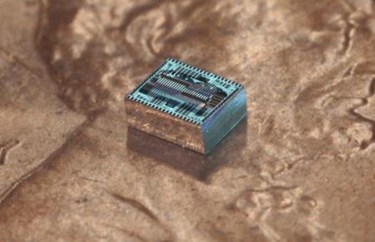Optical Phased Array Technology Could Make Lens-Based Cameras Obsolete
By Jof Enriquez,
Follow me on Twitter @jofenriq

Researchers at the California Institute of Technology (Caltech) have developed a 2D ultra-thin camera that uses an optical phased array (OPA), rather than the curved lenses and mechanical parts of a traditional camera, to capture images.
Lenses are curved so as to bend and focus light rays onto film or an image sensor. Because they must be accommodated inside a casing, bulky lens elements have challenged smartphone manufacturers attempting to pare down the devices’ thickness.
To achieve thinner devices, Caltech researchers have proposed replacing lenses with an ultra-thin optical phased array (OPA).
"We've created a single thin layer of integrated silicon photonics that emulates the lens and sensor of a digital camera, reducing the thickness and cost of digital cameras. It can mimic a regular lens, but can switch from a fish-eye to a telephoto lens instantaneously—with just a simple adjustment in the way the array receives light," said Ali Hajimiri, Bren Professor of Electrical Engineering and Medical Engineering in the Division of Engineering and Applied Science at Caltech.
Phased array technology already is being used in advanced radar and wireless applications. In the Caltech research, instead of capturing radio waves, the phased array's collection of transmitters captures light waves and forms a focused beam of light by adding the output wave of the elements — constructively in one certain direction, and destructively in other directions. With built-in algorithms, any direction can be achieved, because the beam is electronically steerable for imaging.
"Here, like most other things in life, timing is everything. With our new system, you can selectively look in a desired direction and at a very small part of the picture in front of you at any given time, by controlling the timing with femto-second — quadrillionth of a second — precision," said Hajimiri, who, along with Reza Fatemi and Behrooz Abiri, co-authored the paper presented at the Optical Society of America's (OSA) Conference on Lasers and Electro-Optics (CLEO).
Caltech's proof-of-concept demonstration used a 2D lens-less camera with an array consisting of just 64 light receivers in an 8-by-8 grid. As expected, the camera was able to produce a low-resolution image. But the next iteration will have more advanced chips to accommodate a much larger number of light receivers, which can produce higher resolution images, according to the researchers. They believe that, if developed further, an optical phased array-based camera will upend imaging technology.
"The applications are endless," said Abiri. "Even in today's smartphones, the camera is the component that limits how thin your phone can get. Once scaled up, this technology can make lenses and thick cameras obsolete. It may even have implications for astronomy by enabling ultra-light, ultra-thin enormous flat telescopes on the ground or in space."
